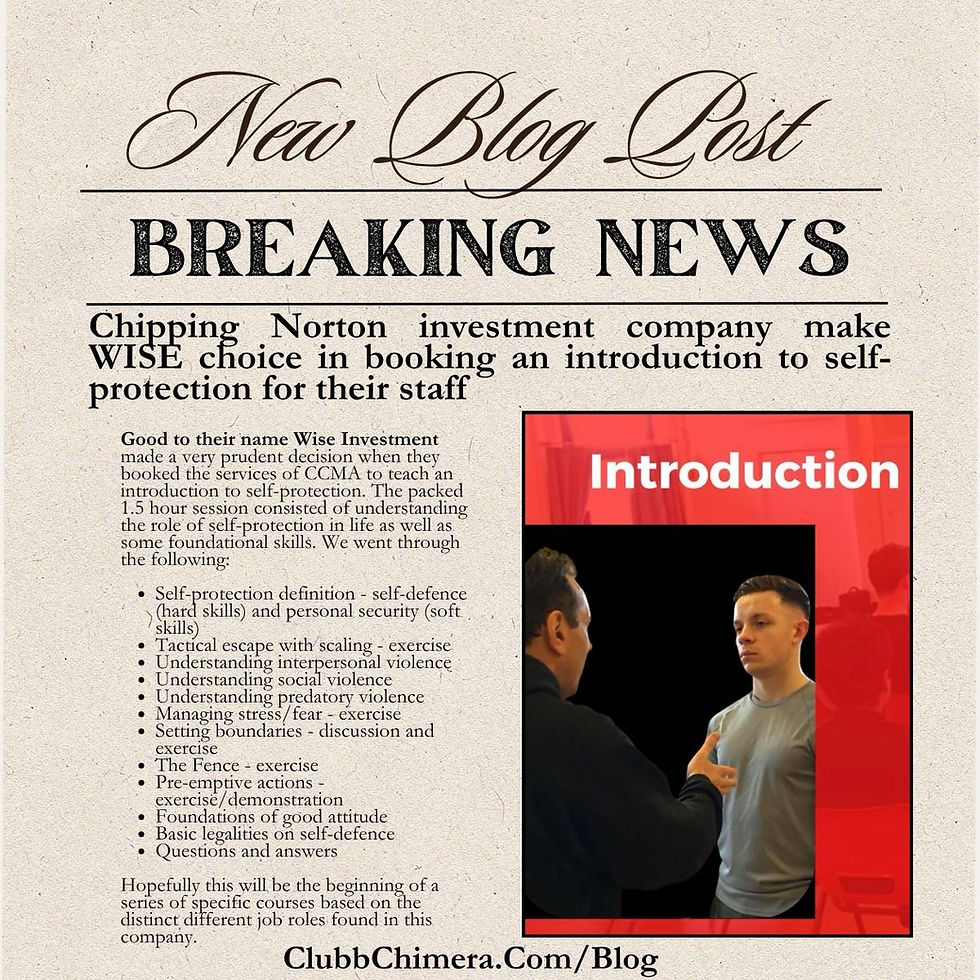Teaching Empathy for Effective De-Escalation Training to On Running Retail Staff at Bicester Village
- jamie03066
- Sep 8
- 3 min read

07.09.2025
I returned to teach the second and final part of my course on managing social violence at the 'On' shop in Bicester Village. All my courses are bespoke in nature, meaning I can tailor the material and training to suit the needs of the store. My mandate was to teach de-escalation strategies, tactics, and techniques, as this is the most obvious problem members of staff face. This falls under the category of social violence.
I also fulfilled an extra request to do some physical training. Although all the physical techniques I taught to the group were functional movements with direct practical applications (including a live game), they were mainly utilised to elevate heart rates.
The lesson began with a presentation on the anatomy of fear, the basics of the sympathetic nervous system, and how mismanaging fear can lead to issues in socially violent situations.
The importance of understanding fear from a psychological and physiological perspective, combined with the previous lesson's insights into situational awareness, social violence observations, trigger points, and how escalation works, provides the perfect foundation for actually applying de-escalation strategies.
Empathy is your most powerful tool in de-escalation. Whenever I want to resolve a conflict situation, I try to look at what is happening from the other person's perspective. By putting oneself in another person's shoes, there is a better chance of seeing a way to mediate the problem. Most importantly, the angered person feels they are being understood and their view is being respected.
If you are not using perceptive listening, if you cannot put yourself in the position of the aggrieved individual, if you cannot accept that everyone is entitled to a bad day, then you have very little hope of being able to calm that person down.
I related situations outside of the shop to everyone's home life. We discussed how everyone had said they regretted things said in moments of anger and stress to loved ones, to their children, their partners, their parents, and friends. Everyone at some time has felt disrespected, disempowered, ignored, insulted, and suffered an injustice or a perceived injustice. I used paradigm shift perspectives, where serious problems might be lying under the surface of an individual who felt disempowered and/or disrespected.
With all of this in mind, I reminded everyone that the course was limited to handling social violence and not predatory violence. Therefore, the situations we were training to deal with in today's class were not scams, acts of stealing, harassment, or other examples of asocial violence. We had to assume the antagonist had been triggered.
Next, we moved on to de-escalation tactics. Here we looked at vocal qualities and general demeanour first, effectively setting their stances. Again, there is no point in applying techniques without the correct presentation.If you are likeable and come across as genuinely caring and interested in the angered person's concerns, it becomes harder for them to escalate further. If your voice and words are clear, easy to understand, yet non-confrontational, you have a better chance of talking someone down. You also need to be in control without the other person feeling they are being controlled. Then we went through live scenarios. Everyone got the chance to play the role of an angered customer and a de-escalating member of staff. As we worked through numerous scenarios, I took everyone down the list of simple techniques, gradually adding to their repertoire but also mapping a path to resolving a conflict.
The lesson finished with some questions and answers, as well as advice on future courses. Of the most obviously relevant courses, I suggest managing predatory violence as the next step.













Comments